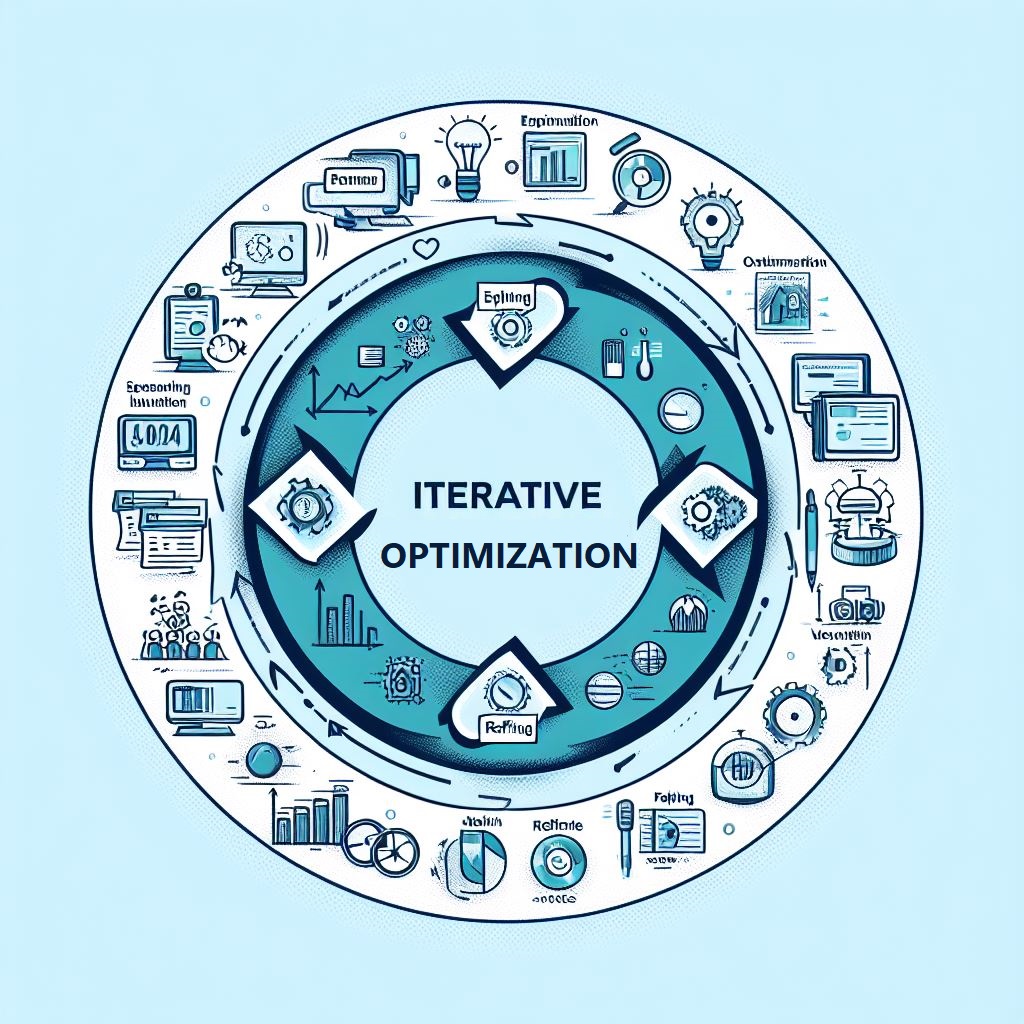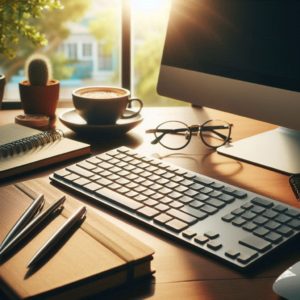Explore the intricacies of prompt engineering strategies, a vital discipline in guiding AI systems towards desired outcomes. From understanding AI model architecture to crafting targeted prompts and prioritizing ethical considerations, discover the blueprint for success in AI-powered applications.
Certainly! Here’s the revised introduction tailored to the domain of “Prompt Engineering”:
Introduction to Prompt Engineering Strategy
In the realm of artificial intelligence and natural language processing, the concept of “Prompt Engineering” stands as a cornerstone for unlocking the true potential of AI models. Much like a master architect designs blueprints for a towering skyscraper, a skilled prompt engineer crafts meticulously tailored instructions to guide AI systems towards desired outcomes.
In this article, we embark on a journey into the world of Prompt Engineering Strategy, guided by the expertise and insights of a seasoned strategist in the field. From dissecting the fundamental principles of crafting effective prompts to unveiling the strategies behind some of the most innovative AI applications, we’ll explore the blueprint for harnessing the power of AI to its fullest extent.
Join us as we delve deep into the mind of a prompt engineer, uncovering the strategies, techniques, and best practices that drive success in the dynamic landscape of AI-powered applications.
1. Key Components of Successful Prompt Engineering Strategies
- Understanding the AI Model Architecture: The foundation of prompt engineering lies in a comprehensive understanding of the architecture and capabilities of the underlying AI model. Whether it’s a transformer-based architecture like GPT (Generative Pre-trained Transformer) or a specialized language model tailored for specific tasks, prompt engineers delve deep into the structure, mechanisms, and parameters of the model. This understanding enables engineers to leverage the model’s strengths, identify potential limitations, and design prompts that effectively interact with the model’s processing mechanisms.
- Crafting Targeted Prompts: Effective prompt engineering involves the art of crafting prompts that effectively guide AI models towards desired outcomes. Engineers meticulously design prompts to provide context, specify tasks or queries, and optimize language to prompt accurate and relevant responses. By tailoring prompts to align with the capabilities and constraints of the AI model, engineers maximize the model’s performance and enhance its ability to generate meaningful outputs.
- Iterative Optimization: Successful prompt engineering is a dynamic and iterative process. Engineers continuously refine and optimize prompts based on iterative experimentation, model outputs, performance metrics, and user feedback. This iterative approach allows prompt engineers to adapt strategies, fine-tune prompts, and optimize model interactions to achieve desired objectives effectively.
- Domain-Specific Expertise: Domain knowledge is a cornerstone of effective prompt engineering. Engineers must possess in-depth understanding and expertise in the specific domain in which the AI model operates. This includes familiarity with industry-specific terminology, context, challenges, and objectives. By leveraging domain expertise, prompt engineers can design prompts that resonate with users, address domain-specific needs, and facilitate accurate and relevant AI-generated responses.
- Ethical Considerations: Prompt engineers navigate ethical considerations inherent in AI development. They ensure that prompts adhere to ethical guidelines, mitigate biases, and prioritize responsible AI practices. By incorporating ethical considerations into prompt engineering strategies, engineers contribute to the development of AI systems that uphold ethical standards, promote fairness, and minimize potential harm to users and society.
2. Understanding the AI Model Architecture
Prompt engineering is deeply rooted in understanding the intricate architecture of the AI models being utilized. These models serve as the backbone of AI-powered systems, dictating how information is processed, patterns are recognized, and responses are generated. Here are key aspects of understanding AI model architecture:
- Transformer-Based Architectures: Many modern AI models, such as GPT (Generative Pre-trained Transformer), rely on transformer-based architectures. These architectures consist of multiple layers of self-attention mechanisms that enable the model to capture complex relationships within input data. Understanding the structure and functioning of transformers is essential for prompt engineers to effectively leverage these models in prompt engineering tasks.
- Specialized Language Models: In addition to general-purpose language models like GPT, there are specialized models tailored for specific tasks, such as question answering, summarization, or translation. Prompt engineers need to familiarize themselves with the architecture and capabilities of these specialized models to determine their suitability for particular prompt engineering tasks.
- Model Parameters and Fine-Tuning: AI models come with a plethora of parameters that govern their behavior and performance. Prompt engineers delve into the specifics of model parameters, experimenting with different configurations and fine-tuning techniques to optimize model performance for specific prompt engineering tasks. This involves adjusting parameters related to model architecture, learning rates, and optimization algorithms to achieve desired outcomes.
- Model Capabilities and Limitations: Each AI model has its own set of capabilities and limitations based on its architecture and training data. Prompt engineers conduct thorough analyses to understand the strengths and weaknesses of the model they are working with. By identifying potential limitations, engineers can devise strategies to mitigate them and leverage the model’s strengths to their advantage.
- Emerging Architectures and Advancements: The field of AI is constantly evolving, with new architectures and advancements being introduced regularly. Prompt engineers stay abreast of these developments, continuously learning and adapting their strategies to incorporate the latest advancements in AI model architecture. This proactive approach ensures that prompt engineering strategies remain cutting-edge and effective in harnessing the full potential of AI models.
Understanding the architecture of AI models is foundational to prompt engineering, empowering engineers to design effective prompts that interact seamlessly with AI systems and yield meaningful outcomes.

Understanding the AI Model Architecture: Image depicting a visual representation of a transformer-based architecture, with labeled components illustrating how input data is processed through layers of self-attention mechanisms.
3. Crafting Targeted Prompts
Crafting effective prompts is a cornerstone of successful prompt engineering strategies. Prompt engineers meticulously design prompts to guide AI models towards desired outcomes, whether it’s generating text, answering questions, or performing specific tasks. Here are key considerations in crafting targeted prompts:
- Providing Context: Effective prompts provide sufficient context for the AI model to understand the task at hand. This includes setting the scene, defining relevant variables, and outlining the desired outcome. By providing clear context, prompt engineers enable AI models to generate responses that are relevant and coherent within the given context.
- Specifying Tasks or Queries: Prompts should clearly specify the tasks or queries that the AI model is expected to perform. Whether it’s generating a summary, answering a question, or completing a task, prompt engineers articulate the task requirements in a concise and unambiguous manner. This ensures that AI models understand the intended task and generate appropriate responses accordingly.
- Optimizing Language: Language plays a crucial role in prompt engineering. Engineers carefully craft prompts using language that resonates with the target audience and aligns with the objectives of the task. This may involve choosing words and phrases that are familiar to the target audience, using appropriate tone and style, and avoiding ambiguity or confusion in the prompt language.
- Formatting and Structure: The format and structure of prompts can influence how effectively AI models interpret and respond to them. Engineers consider factors such as length, layout, and organization of prompts to optimize model performance. This may involve breaking down complex tasks into smaller, more manageable components, using bullet points or lists to convey information, and structuring prompts in a logical and intuitive manner.
- Iterative Refinement: Crafting targeted prompts is an iterative process that involves continuous refinement and optimization. Prompt engineers experiment with different prompt variations, analyze model outputs, and gather feedback to iteratively improve the effectiveness of prompts. This iterative approach enables engineers to fine-tune prompts based on real-world performance and user interactions, ultimately enhancing the overall efficacy of prompt engineering strategies.
By carefully crafting targeted prompts, prompt engineers empower AI models to generate responses that meet the specific needs and objectives of the task at hand. This ensures that AI-powered applications deliver accurate, relevant, and meaningful outcomes to users.

Crafting Targeted Prompts: Illustration showing a prompt being crafted on a computer screen, with various elements such as context, tasks, and queries highlighted to demonstrate the process of designing targeted prompts.
4. Iterative Optimization
Iterative optimization is a fundamental aspect of successful prompt engineering strategies. Prompt engineers engage in a continuous process of refinement and enhancement to optimize prompt effectiveness and improve AI model performance. Here are key aspects of iterative optimization:
- Experimentation and Testing: Prompt engineers conduct systematic experiments to test different prompt variations and configurations. This may involve adjusting parameters, modifying language, or reformatting prompts to assess their impact on model performance. By systematically testing various iterations, engineers gather empirical data to inform optimization decisions.
- Analyzing Model Outputs: In iterative optimization, prompt engineers closely analyze model outputs to evaluate the quality and relevance of generated responses. This involves examining factors such as coherence, accuracy, and relevance to assess how well prompts align with desired outcomes. By analyzing model outputs, engineers identify patterns, trends, and areas for improvement to guide optimization efforts.
- Performance Metrics: Prompt engineers leverage performance metrics to quantitatively evaluate prompt effectiveness and model performance. Metrics such as precision, recall, and F1 score provide objective measures of how well prompts elicit desired responses and how accurately models generate outputs. By tracking performance metrics over time, engineers monitor progress, identify areas of improvement, and benchmark performance against established goals.
- User Feedback and Iterative Refinement: User feedback plays a crucial role in iterative optimization. Prompt engineers solicit feedback from users to understand their preferences, needs, and pain points. This feedback informs iterative refinement efforts, guiding prompt adjustments, and optimizations to better align with user expectations. By incorporating user feedback into the optimization process, engineers ensure that prompts are tailored to meet user needs and preferences effectively.
- Continuous Improvement: Iterative optimization is an ongoing process that extends throughout the lifecycle of AI-powered applications. Prompt engineers continuously monitor performance, gather feedback, and iterate on prompt designs to drive continuous improvement. By adopting a mindset of continuous learning and adaptation, engineers adapt prompt engineering strategies to evolving requirements, challenges, and opportunities, ensuring that AI-powered applications deliver optimal performance and user satisfaction.
Iterative optimization lies at the heart of successful prompt engineering strategies, enabling engineers to refine and enhance prompts iteratively to maximize AI model performance and deliver superior outcomes to users.

Iterative Optimization: Graphic displaying a cycle of experimentation, analysis, and refinement, symbolizing the iterative optimization process in prompt engineering. Arrows indicate the continuous loop of testing, analyzing outputs, and refining prompt designs.
5. Domain-Specific Expertise
Domain-specific expertise is essential for effective prompt engineering. Prompt engineers must possess deep knowledge and understanding of the specific domain in which the AI model operates. Whether it’s healthcare, finance, customer service, or any other domain, domain expertise enables prompt engineers to design prompts that align with the unique needs, terminology, and challenges of the domain. Here are key aspects of domain-specific expertise in prompt engineering:
- Industry Knowledge: Prompt engineers acquire in-depth knowledge of the industry or domain in which the AI model will be deployed. This includes understanding industry-specific terminology, regulations, standards, and best practices. By familiarizing themselves with the nuances of the industry, engineers can design prompts that resonate with users and address domain-specific needs effectively.
- Contextual Understanding: Domain expertise enables prompt engineers to contextualize prompts within the broader context of the domain. Engineers consider factors such as industry trends, market dynamics, and customer preferences when crafting prompts. This contextual understanding ensures that prompts are relevant, timely, and aligned with the current state of the industry.
- User Persona Mapping: Prompt engineers leverage domain expertise to create user personas that represent the target audience within the domain. By understanding the demographics, preferences, and pain points of the target audience, engineers can tailor prompts to resonate with specific user segments effectively. This user-centric approach ensures that prompts are personalized and engaging for the intended audience.
- Task-Specific Knowledge: Prompt engineers possess task-specific knowledge relevant to the domain. Whether it’s diagnosing medical conditions, analyzing financial data, or providing technical support, engineers understand the intricacies of the tasks that the AI model will be performing. This task-specific knowledge informs prompt design, enabling engineers to craft prompts that guide AI models towards accurate and relevant responses.
- Domain-Specific Challenges and Opportunities: Domain expertise equips prompt engineers with insights into the unique challenges and opportunities within the domain. Engineers anticipate potential pitfalls, biases, and limitations associated with prompt engineering in the domain. By proactively addressing these challenges and capitalizing on opportunities, engineers ensure that prompt engineering strategies are tailored to the specific needs and dynamics of the domain.
Domain-specific expertise is a cornerstone of effective prompt engineering, empowering engineers to design prompts that resonate with users, address domain-specific needs, and drive superior outcomes in AI-powered applications.
Domain-Specific Expertise: Image portraying prompt engineers collaborating with domain experts from various industries, exchanging insights and knowledge to tailor prompts that align with specific domain needs and challenges.
6. Ethical Considerations
Prompt engineers navigate ethical considerations inherent in AI development to ensure that prompt engineering strategies prioritize ethical principles and responsible AI practices. Here are key aspects of ethical considerations in prompt engineering:
- Fairness and Bias Mitigation: Prompt engineers strive to design prompts that promote fairness and mitigate biases in AI-generated outputs. This involves identifying and addressing biases in training data, prompt language, and model outputs to ensure equitable treatment of all users. By incorporating fairness considerations into prompt engineering strategies, engineers contribute to the development of AI systems that uphold principles of fairness and equality.
- Transparency and Explainability: Prompt engineers prioritize transparency and explainability in prompt design and model behavior. They aim to make prompt language and model outputs transparent and understandable to users, enabling them to interpret and evaluate AI-generated responses effectively. By promoting transparency and explainability, engineers build trust and confidence in AI-powered applications among users.
- Privacy and Data Protection: Prompt engineers uphold privacy and data protection principles in prompt engineering practices. They ensure that prompts adhere to privacy regulations and guidelines, safeguarding user data and sensitive information from unauthorized access or misuse. By prioritizing privacy and data protection, engineers uphold user trust and confidence in AI-powered applications.
- Accountability and Responsibility: Prompt engineers recognize their role in ensuring the accountability and responsibility of AI systems. They take proactive measures to monitor prompt performance, address issues, and respond to user feedback in a timely and responsible manner. By embracing accountability and responsibility, engineers contribute to the development of AI systems that prioritize user welfare and societal well-being.
- Ethical Guidelines and Standards: Prompt engineers adhere to ethical guidelines and standards established by regulatory bodies, professional organizations, and industry consortia. They stay informed about evolving ethical considerations in AI development and incorporate ethical principles into prompt engineering strategies. By following ethical guidelines and standards, engineers ensure that prompt engineering practices align with ethical norms and values.
Ethical considerations are paramount in prompt engineering, guiding engineers to design prompts and develop AI systems that prioritize ethical principles, user welfare, and societal well-being.
Ethical Considerations: Visual representation of a prompt engineer navigating through an ethical maze, symbolizing the complex ethical considerations inherent in prompt engineering. Signposts labeled with ethical principles guide the engineer towards responsible decision-making and ethical prompt design.
Conclusion
In the dynamic landscape of AI-powered applications, prompt engineering emerges as a critical discipline for guiding AI systems towards desired outcomes effectively. From understanding the intricacies of AI model architecture to crafting targeted prompts, from iterative optimization to leveraging domain-specific expertise, prompt engineers play a pivotal role in shaping the performance and behavior of AI systems.
By prioritizing ethical considerations and responsible AI practices, prompt engineers ensure that AI-powered applications uphold principles of fairness, transparency, and accountability. Through continuous learning, adaptation, and innovation, prompt engineering strategies evolve to meet the evolving needs and challenges of the AI landscape, driving advancements and delivering superior outcomes to users and society.
As we unravel the complexities of prompt engineering, we gain deeper insights into the strategies, techniques, and philosophies that underpin the success of AI-powered applications. By delving into the mind of a prompt engineer, we uncover the blueprint for harnessing the full potential of AI to drive innovation, empower users, and shape the future of technology.
Join us on this journey into the realm of prompt engineering, where creativity meets computation, and innovation knows no bounds.
Description: Explore the intricacies of prompt engineering, a vital discipline in guiding AI systems towards desired outcomes. From understanding AI model architecture to crafting targeted prompts and prioritizing ethical considerations, discover the blueprint for success in AI-powered applications.
Keywords: prompt engineering, AI model architecture, targeted prompts, iterative optimization, domain-specific expertise, ethical considerations, AI-powered applications





Pingback: Some roses are red - Daily-On.Com
Your comment is awaiting moderation.
When I originally commented I clicked the -Notify me when new feedback are added- checkbox and now each time a remark is added I get four emails with the same comment. Is there any method you can take away me from that service? Thanks!